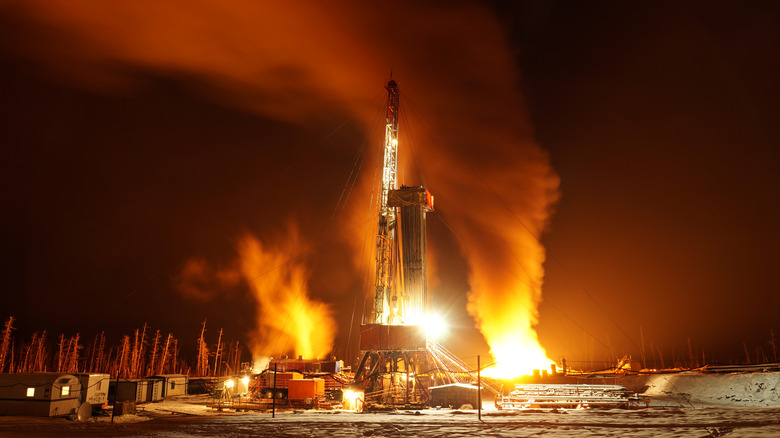Uses Of Methane Natural Gas
Methane gas comes from fermenting organic matter and can also come from the distillation of coal and natural gas. The planet's heat and pressure affect the biomass of dead plants, so its energy-rich carbon molecules become materials from which methane extraction can happen. Methane is the main component of natural gas. The combustion of methane releases energy, which is in the form of natural gas. You can use this energy in homes and businesses.
TL;DR (Too Long; Didn't Read)
The main uses of methane natural gas are to generate electricity and make energy. It can power homes and other buildings. Methane natural gas can also provide heat.
The Industrial Uses
The Industrial Uses
Methane, in the form of natural gas, is important for a variety of industries. It is a common fabric, plastic, anti-freeze and fertilizer ingredient. Industrial natural gas consumers include companies that make pulp and paper. Food processors, petroleum refineries and companies that work with stone, clay and glass, use the energy it releases. Methane-based combustion helps businesses dry, dehumidify, melt and sanitize their products. The use of methane natural gas in commercial settings also sometimes resembles home uses.
The Home Uses
The Home Uses
Natural gas is cheaper than electricity. It is a lower cost option for people and businesses who need power and heat. However, home uses vary. Some consumers use the methane in natural gas as a source of energy while cooking. Others use it to heat and cool their homes. For example, some homes use methane natural gas to heat their water. Another common use in the home is a natural gas fireplace. There are also natural gas dryers for your clothes, but they are less common.
The Distributed Generation
The Distributed Generation
Through a process called distributed generation, the methane in natural gas can create electricity. Microturbines (heat engines) and natural gas fuel cells can produce enough electrical energy to power a home. While distributed generation technology remains in its infancy, it has a promising future. The Natural Gas Supply Association predicts that distributed generation will offer homeowners energy independence. The first system of this kind was put in place in a Latham, New York, home. The home strictly relies on a fuel cell and its natural gas line for its energy needs.
Cite This Article
MLA
Hadley, Christina. "Uses Of Methane Natural Gas" sciencing.com, https://www.sciencing.com/uses-methane-natural-gas-6134860/. 25 April 2018.
APA
Hadley, Christina. (2018, April 25). Uses Of Methane Natural Gas. sciencing.com. Retrieved from https://www.sciencing.com/uses-methane-natural-gas-6134860/
Chicago
Hadley, Christina. Uses Of Methane Natural Gas last modified March 24, 2022. https://www.sciencing.com/uses-methane-natural-gas-6134860/
